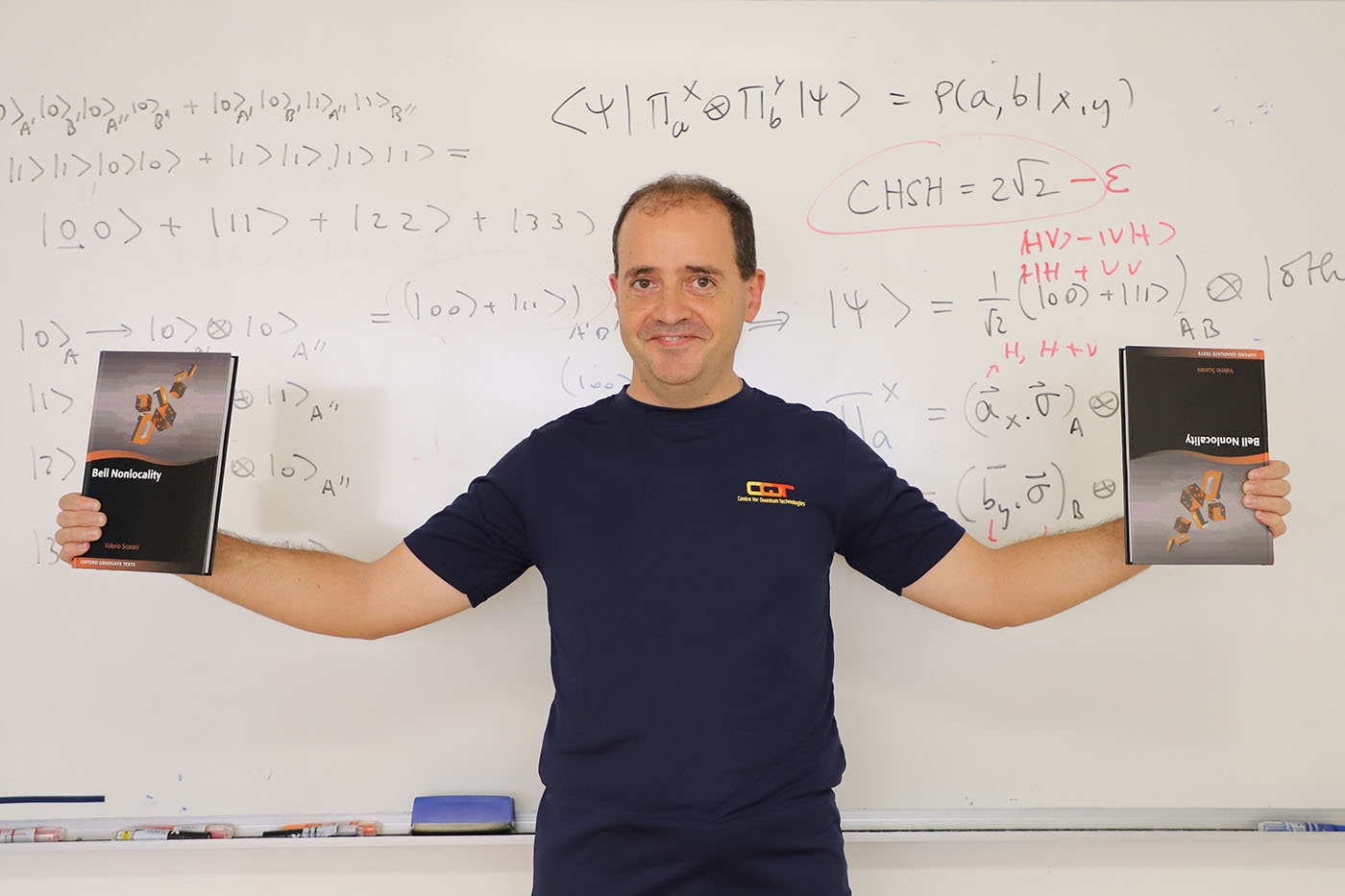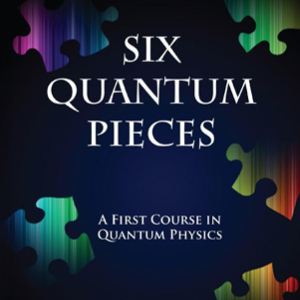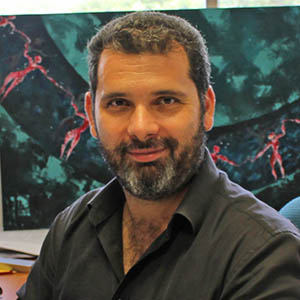Highlights
New book by CQT’s Valerio Scarani provides a guide to Bell Nonlocality
 Valerio Scarani with two copies of his book Bell Nonlocality demonstrating a (classically) anti-correlated state.
Valerio Scarani with two copies of his book Bell Nonlocality demonstrating a (classically) anti-correlated state.
"Bell nonlocality is one of the most striking discoveries triggered by quantum theory.” That’s what it says on the back cover of Bell Nonlocality, a new graduate text by CQT Principal Investigator Valerio Scarani published on 13 August by Oxford University Press.
John Bell was a physicist who in 1964 showed that quantum predictions are not compatible with the idea that measurement results are predetermined. The proof goes through a form of 'nonlocality': when measurements are made on two systems in a joint quantum state, the results for each system are individually random, but looked at together, they show correlations that are classically explainable only through communication. Only, there is no possibility for communication between those systems either.
"As Valerio describes it in the epilogue of his book, “a description of those individual events won’t fit in the space-time setting we are familiar with”. Famously, the orthodox interpretation of quantum theory avoids the problem by declaring that individual events are unspeakable and that physics describes only the statistics.
The book gives a logical introduction to the topic, which has evolved in recent years from fundamental science to applications in the ‘device-independent’ certification of quantum technologies. Valerio began writing the book in 2017, when, he said, it seemed the field had matured to the point where such a textbook could be useful and remain current.
The first part of the 240-page book introduces the core ideas, the second part considers the applied side of nonlocality, and the third part explores the consequences of nonlocality for the foundations of physics. Further historical and technical notes are collected in Appendices. The book also includes exercises.
In drafting the text, Valerio sought feedback from colleagues on early versions. In 2018, he also taught a graduate module in the National University of Singapore using the book draft. “Between the teaching and the feedback from the students, it really improved”, he says. He thanks these students along with his group members and collaborators in the book’s acknowledgments.
The book carries endorsements from CQT Director Artur Ekert and Antonio Acin from The Institute of Photonic Sciences in Barcelona, Spain. Artur says of Valerio’s work that “His lucid exploration of Bell nonlocality guides the reader through some of the most puzzling features of quantum theory and beyond, striking a nice balance between mathematical precision and accessibility.”
A quote introduces each book chapter. Among the quotes Valerio chose is one from the web comic XKCD by Randall Munroe. He posited Bell’s Second Theorem: Misunderstandings of Bell’s Theorem happen so fast that they violate locality (see the cartoon here). Taking the time to read Valerio's textbook may prevent that.
Related Stories
 | The Straits Times reports on textbook co-authored with students October 14 2010 |
 | Professor celebrates publication of lecture notes August 07 2014 |
 | Book presents global perspectives on quantum simulation October 19 2017 |






